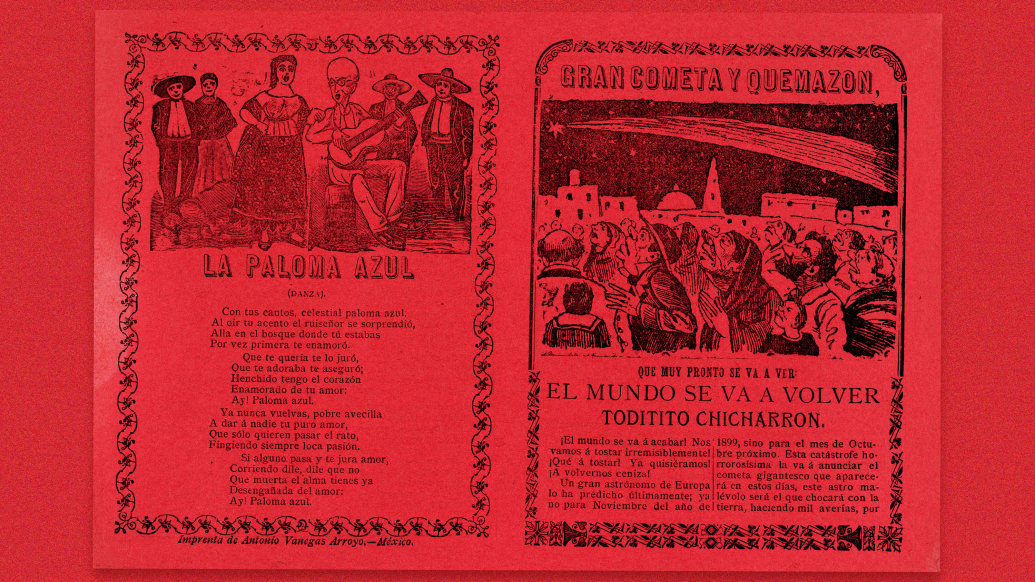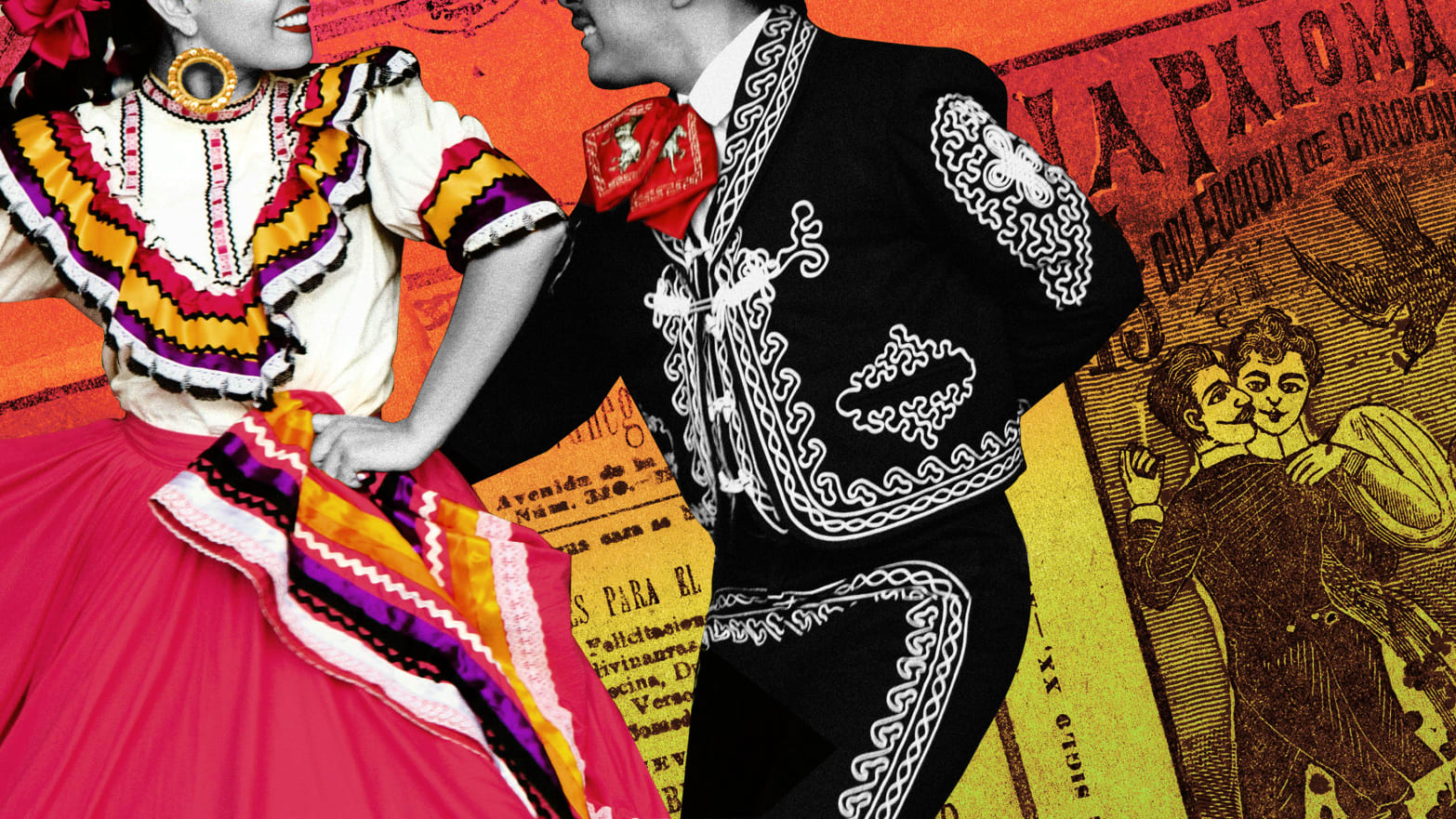The World’s Most Famous Tune Is Cinco de Mayo’s Theme Song

Do we have a favorite song, one that could be said to express our deepest emotions of love and longing? One that appeals to listeners of all popular music, from rock, country, jazz, salsa, reggae, and K-pop?
According to one German journalist writing in 2004, there is one song that is “the most played, most sung, most listened to, most recorded, most varied song in world history.” There’s a lot of “most” packed into that sentence, but “La Paloma” checks all the boxes.
Several musicologists claim that it rivals the Beatles’ “Yesterday” as the most recorded song ever. How many times has “La Paloma” been recorded? As popular as “Yesterday” is, it hasn’t been played in weddings in Zanzibar or at funerals in Romania as “La Paloma” has.
Neither “Yesterday” nor any other song besides “La Paloma” set a Guinness World Record for largest choir when it was sung by 88,600 in a soccer stadium in Hamburg, 2004. “Yesterday” hasn’t appeared on the soundtracks of dozens of movies. “La Paloma,” the Song of the Dove, has a long and rich history in film. It was introduced to the big screen in 1930 via a four-minute cartoon, “La Paloma,” by Max Fleischer for Paramount Pictures.
It was featured in the 1934 Douglas Fairbanks-Merle Oberon adventure comedy, The Private Life of Don Juan, even though all incarnations of the fictional Don Juan appeared decades before “La Paloma” was written. In the epic biopic Juarez, Bette Davis and Brian Aherne as Carlotta and the Emperor Maximillian von Hapsburg overhear the song at night from the balcony of Chapultepec.
‘I wonder who it is,” muses Maximillian. “Who knows,” Carlotta replies. According to a post on YouTube, it was the great Mexican mezzo soprano Consuelo Melendez. (The pair had been sent to rule Mexico by Napoleon III. The new emperor and empress loved “La Paloma” on first hearing it, thinking it was an old Mexican folk song, and would never know it may have arrived in Mexico about the same time they did.)
The song worked its way onto the soundtracks of Kurosawa’s Stray Dog (1949), Don Siegel’s Invasion of the Body Snatchers (1956), Elvis’s Blue Hawaii (1961) under the title “No More.” In The Godfather Part II the orchestra is playing “La Paloma” at the New Year’s Eve festivities in Havana just before Batista is overthrown. For the German submariners in Das Boot (1981) “La Paloma” conjures memories of halcyon pre-war days as they dodge Allied destroyers in the cold, dark depths of the Atlantic. It carries a poignant association for a young South Korean woman stricken by Alzheimer’s disease in A Moment to Remember (2004), and for a rare moment of sentimental reflection in the Philippine gangster movie Manilla Kingpin (2011).

Creator in the shadows
Where did “La Paloma” come from? Much of the song’s history remains shrouded in a cloak of romantic myth, resisting the most dedicated efforts of researchers. What we do know is that it was written by a Basque church musician and composer named Sebastian de Iradier y Salaverri born in northern Spain in 1809. The Parisian publisher of his compositions suggested that he change his surname to Yradier, a more phonetic spelling than the Spanish Iradier. Little is known about his life. In the early 1860s he traveled to Cuba, where he first heard the distinctive habanera beat and, though here we can only go by legend, spent time listening to traditional songs of Cuban sailors.
Though the lyrics of the songs often differed, they told similar stories of the loneliness, longing for home, the pain of separation from loved ones, and, always, the ever-present fear of death on the often turbulent and always indifferent sea.
One theme in particular struck Yradier, one that could be traced back to 492 B.C. Persian emperor Darius the Great sent a fleet in advance of his invasion of Greece commanded by Admiral Mardonius. Just off the coast of Mount Athos, Mardonius’ ships were swept up in a gale and were wrecked and scattered. As the squall subsided, the Greeks watching from the shore were amazed to see clouds of white birds flying away from the stricken Persian vessels. They might have been homing pigeons which the sailors used for communication with the Persian Army, but in the legend that sprang from the retelling, the birds became white doves carrying messages of love and farewell from the doomed sailors to their loved ones.
Out of kinship with the Persians, their fellow sailors, the Greeks wrote songs in praise of the white doves who carried the seamen’s final words of love and longing.
We don’t know what songs Yradier heard from sailors all over the world in Havana’s taverns, but we know that he penned a tribute to the white doves, the carriers of messages from the soul, and grafted it to the distinctive Cuban habanera rhythm.
Researchers have concluded that sometime between 1861 and 1863—1863 is the favorite guess, which would make this year the 160th anniversary—Yradier composed the piece that would come to be known as “La Paloma,” the Song of the Dove. Its popularity spread with astonishing swiftness through Spain and back to Cuba and Mexico, both of which claim it today. In much of Mexico, it is regarded as the unofficial theme song of Cinco de Mayo. From the Caribbean it spread across the world.
According to the Spanish embassy in Washington, D.C., Yradier died in obscurity in 1865 and was buried in Vitoria-Gasteiz. He had not an inkling that he had written what would become the world’s most popular song. Two years later, the “La Paloma” legend was enhanced when the Emperor Maximillian requested to hear it as his last song before he was executed by Benito Juarez’s revolutionary army.
Enter the phonograph
In 1877 the phonograph was invented, and two years later, according to James Fuld’s The Book of World-Famous Music, “‘La Paloma’ was copyrighted in Spain in what translates as “American song with piano accompaniment.”
In 1896 the Italian-American tenor Ferruccio Giannini became the first singer to record opera; in the same session he made the first known recording of “La Paloma.” Seven years later, the Brooklyn-born French-American mezzo-soprano Zélie de Lussan recorded her rendition, which can still be heard today.
In the 20th century “La Paloma” became a virtual anthem for sailors of fleets all over the world. Except, that is, for sailors of the Austrian navy, who refused to play or sing the song in deference to Maximilian. That is, until 1960, when someone in the Austrian government realized that, as it was a favorite of the slain emperor, “La Paloma” should be played in his honor.
Over the next one hundred-plus years, “La Paloma” would be recorded over 2,000 times by one estimation. In 2004, a German journalist cited Kalle Laar, calling him “the undisputed La Paloma connoisseur and collector,” that he has long since lost track, but feels the number could exceed 5,000.
However many recordings can be found, the German independent record label Trikont is attempting a project it admits may be “seemingly insane,” rounding up every version they could find of “La Paloma.” That included renditions by opera greats (Placido Domingo), pop singers (Dean Martin, Engelbert Humperdinck, Mireille Matthieu, Julio Iglesias), folk artists (Nana Mouskouri), country singers (Marty Robbins), and jazz greats (Charlie Parker, Gerry Mulligan). There are recordings from Afghanistan, China, and India.
There’s a “La Paloma” by an all-female South Korean group, Big Mama. Even included are contributions from two Elvises—Presley and Costello (the latter went to Berlin for the recording session).
So thorough is the label’s “La Paloma” search that they even included a sound bite from The Maltese Falcon, with Humphrey Bogart’s Sam Spade saying that the black bird had just arrived on the ship La Paloma.
In 2004 Trikont released a CD: La Paloma: One Song For All The Worlds with 25 versions that their PR called the song “the only tune that waves itself for the last 130 years through the melodic memory of the human race. It always finds new roots in changing and opposing texts and emotions: love, pain, homesickness, longing to travel, joy of life and fear of death.” (Eventually Trikont released several “La Paloma” CDs.)
Generations of writers and poets have struggled to put a pin in “La Paloma’s” appeal only to settle for words like ineffable and enigmatic. Marcel Proust, who was fascinated by the song, concluded that one should stop trying to analyze the song and simply give in to it. In his essay “Praise of Bad Music”—bad meaning common, nonclassical, artless—he wrote, “Since it is played and sung much, much more passionately than good music, it has gradually become even more associated with the daydreams and tears of music filled with humanity. Therefore let it be worthy of worship.”
It should be noted, though, that Sebastian Yradier made one entry into the realm of good music. In 1875 the French composer Georges Bizet wrote his immortal Carmen, arguably the most popular opera of all time. Its most recognizable song was “The Habanera,” with its distinctive beat. When Bizet came across the composition entitled “El Arreglito” (The Arrangement), he thought it was a folk song. Bizet later gave attribution to Yrader in the vocal score. Thus Sebastian Yradier became the first two-hit wonder composer of the most recorded songs in the realms of both bad and good music.
“La Paloma” has been sung in so many languages and in so many styles that there is no such thing as a standard translation of the lyrics. But this English translation for this hugely popular recording by Nana Mouskouri is as good as and better than most.
(Note: This piece is dedicated to my father, Alfred Barra, who talked me into watching Juarez with him when I was 11, the start of a love affair with a song that lasts to this day.)
Source: The World’s Most Famous Tune Is Cinco de Mayo’s Theme Song






